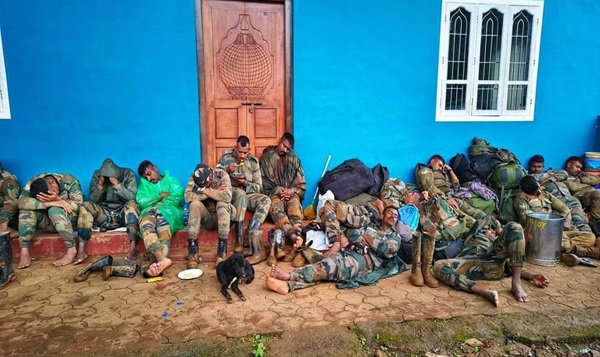
Team News Riveting
Wayanad, August 11
The Geological Survey of India (GSI) report on the aftermath of the Wayanad flood stated that the four areas affected by multiple landslides on June 30 fall within the Moderate Susceptibility Zone (MSZ).
The GSI had classified these places that included worst affected Chooralmala, Mundakkai, Vellaramala and Attamala eight years ago during the National Landslide Susceptibility Mapping conducted in 2015-16. The MSZ refers to areas that are moderately prone to landslides under certain triggering conditions, such as heavy rainfall, earthquakes and other similar events.
The devastating nature’s fury has killed over 400 people while 150 are reportedly missing.
“GSI has carried out national Landslide Susceptibility Mapping NLSM in this area during the field season 2015-16. As per the susceptibility map of NLSM, all the four affected areas viz. Chooralmala, Mundakkai, Vellaramala and Attamala come under Moderate Susceptibility Zone (MSZ). Nevertheless, the high reaches and hilly areas around these affected areas are highly susceptible according to the NLSM map,” the report said.
It also traces the recent historical events leading to the landslide. According to the report, the initiation of the landslide happened in 2018, during the monsoon season. This was the year that Kerala witnessed unprecedented rainfall and the entire state was ravaged by floods. Many areas in the state received 116 percent more rainfall than normal.
The GSI report indicates that the area became more prone to landslides over the last years. “As per GE imagery, the initiation of the landslide in the source area occurred during the monsoon of 2018. During the successive years, the area of the slide seems to increase, and also observed minor slides developed along both the flanks of the stream,” the report reads.
Though the 2018 rains caused the topography of the area to change, the report identified that the major trigger for the recent landslide was excessive rainfall. “The excessive rainfall is the major triggering factor which results in increase of pore water pressure and reduction of strength on super saturation initiating the slide,” the report said.
“The loose and unconsolidated nature of overburden material resulting in rising excess pore pressure within due to incessant rain is assessed to be the triggering factor for all these incidences,” report highlights.
According to rainfall data from various parts of Wayanad District in the 24 hours leading up to the disaster, Puthumala received 372.6 millimetres of rain, classified as very heavy rainfall.
The report also notes that during the post-disaster landslide studies conducted after the Puthumala landslide in 2019, the GSI had identified areas in and around Vellarimala and Chooralmala as landslide-prone. Puthumala is approximately 6.5 kilometres away from Chooralmala and Mundakkai.
According to survivors, three consecutive landslides occurred in Wayanad in the early hours of July 30. Following the landslides, the bridge connecting Mundakkai to Chooralmala and other parts of Wayanad collapsed, isolating the area.
Although this made rescue operations difficult, several people were rescued with the help of the Indian Army, Fire and Rescue officials, and other rescue operators. The official death toll is 225 now, with 131 people still missing and around 193 body parts recovered. According to reports, 2,243 individuals remain in relief camps in the district.



